Dimitar Solakov / Kalin Serapionov / Kamen Stoyanov / Krassimir Terziev / Mariana Vassileva / Pravdoliub Ivanov / Rada Boukova / Samuil Stoyanov / Stefan Nikolaev / Ventsislav Zankov / Vikenti Komitski
21 December 2020 – 2 February 2021

Dimitar Solakov / Kalin Serapionov / Kamen Stoyanov / Krassimir Terziev / Mariana Vassileva / Pravdoliub Ivanov / Rada Boukova / Samuil Stoyanov / Stefan Nikolaev / Ventsislav Zankov / Vikenti Komitski
21 December 2020 – 2 February 2021
Neon (AG: νέον, „new“) is a chemical element with atomic number 10 and atomic mass 20,1797 u, denoted by the symbol Ne. Although a very common element in the universe, it is relatively rare on Earth. Under standard conditions of temperature and pressure it is a colorless and odorless energy gas. Neon emits a distinct reddish-orange glow when used in high-voltage neon discharge tubes. It is commercially extracted by the fractional distillation of liquid air at very low levels of concentration. (Wikipedia)
at night our walls emit
on the outside perhaps glow dimly
crunchy as neon and a slight grip
the air fills in the imagination
the air breathes us
we buzz
the air – sensuous roughness
V.S., May, 2020
Let us turn to matter, disregarding the gaze and focusing on the manifestation. Exactly nowadays, when all of our social functions have died down, when we stalk the body and speak to it in whispers, negotiating relationships.
Let us talk about the artistic choice. About the chosen body of the artwork without us listening to the chosen language of its making, without reading its text. Let us talk about the illumination in art. Let us not talk about the physical sensation of glass, gas and electricity. A play of fragile, delicate glass, a play with the potentiality, with the voltage of electricity – that which creates. A play visible through the presence of the neon gas – ephemeral, extracted as a substance from the air.
Sensibility, eventually detached from conceptualism and its fixations, or sensibility that only seemingly embodies the reversal of values in various modernisms.
Inhabiting the alien domain of commerce, does this art of neon not inform us it is impossible for it to exist within its bounds.
Or caught between these eye-catching functional or historically programmed gestures, delicate as the neon gas with its property of giving light, does it not simply show how it exists in between. How to exist.
There is an end to every circle, written in a circle (Vikenti Komitski); Safe, I’m Safe, I’m Safe, I’m, in alarming red (Kalin Serapionov); No Way, in distinctly underlined handwriting (Stefan Nikolaev); On the Wrong Side, inverted as a mirror image (Pravdoliub Ivanov); Future Unforgettable, in a standard straight font (Krassimir Terziev); Much Too Little / A Little Too Much, blinking at us (Pravdoliub Ivanov); Ice Caps (Dimitar Solakov); Balkanton with a Dropped O (Stefan Nikolaev); Nothing is Just, casually handwritten (Mariana Vassileva). Or the images: High Voltage Fence (Kamen Stoyanov), the red-hot electric century-old tree (Ventsi Zankov). Which of these two worlds do we inhabit, what is this dualism and this choice. Is it.
Can we grasp the property of doubt that these artworks exhibit. Doubt – wrongly perceived as confidence, an occasion for a life motif, an outwitting of reality, a joyous reversal, everyday philosophy, something else that will make an impression on our behalf. Is it not that the authors themselves put a big buzzing question mark above these artworks.
And why this fragility of the artwork in its own body, this invisible detachment from the instinctual, nowadays we can recognize a possibly much more valuable property of art – neon. A gesture that we characteristically recognize in artworks like Beam Throwing (Rada Boukova), Utopia 2 (Samuil Stoyanov), Don’t Give Up (Pravdoliub Ivanov).
Could it be that the choice of humility, although resembling a revolt, is consciously implemented within the work by its author; is it that the artist approaches this medium in a rather sensuous and tactile manner than just in a practical one. With the awareness that this is the type of art that can easily be excluded from the contact or be damaged. Yet also an art that was never produced by the artist himself but by the dexterous neon manufacturer who fulfils all the wishes, commercial and artistic ones. In the end, is this not an art that is desired by its author. Imagined. Much too often presented with a pencil on a piece of paper or with a computer mouse on any type of screen. Is the artwork not situated precisely in/with/between humility and the impulse.
GLASS, GAS AND ELECTRICITY is an exhibition that perceives the ephemeral body of the artwork, senses the neon as gas, hears the buzzing sound of this matter and organizes a space for the visitors around the question what this circle is that ends in a cycle. The exhibition invites those who will see it, partially through the windows of Sariev gallery and in its entirety in the viewing room on the gallery site, to experience doubt.
The exhibition will present artworks of neon and project drawings by authors Rada Boukova, Mariana Vassileva, Ventsislav Zankov, Pravdoliub Ivanov, Vikenti Komitski, Stefan Nikolaev, Kalin Serapionov, Dimitar Solakov, Kamen Stoyanov, Samuil Stoyanov, Krassimir Terziev.
The exhibition follows a thematic retrospective vein with a rear view of Bulgarian contemporary art, while at the same time projecting its curiosity forward by choosing to present project drawings of artworks yet to be realized.
GLASS, GAS AND ELECTRICITY can be seen partly at 40 Otets Paisii Str, Plovdiv and entirely in the viewing room on the gallery site http://www.sariev-gallery.com from December 21, 2020 to February 2, 2021.
GLASS, GAS AND ELECTRICITY
text, selection of the works and structure: Vesselina Sarieva
Press
SARIEV SENDS #2020 WITH GLASS, GAS AND ELECTRICITY, Boyscout, 22.12.2020
The exhibition "Glass, Gas and Electricity", BNT, 6.01.2021
The tricks of neon in Sariev Gallery, BNR, 9.01.2021
GLASS, GAS AND ELECTRICITY at SARIEV Gallery, Art Viewer, 23.01.2021
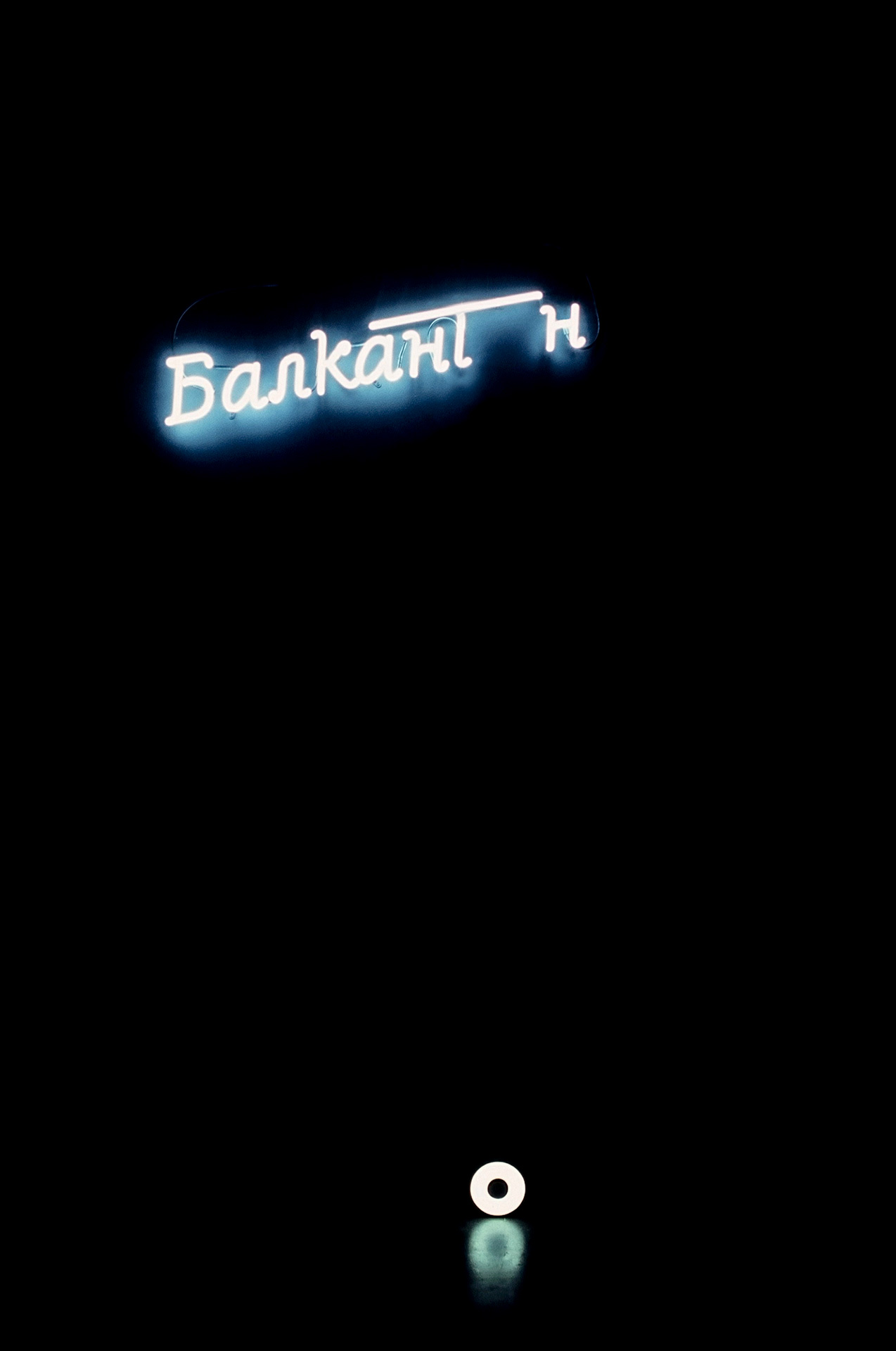 Stefan Nikolaev
Balkanton, 2004
neon, light box
Stefan Nikolaev
Balkanton, 2004
neon, light box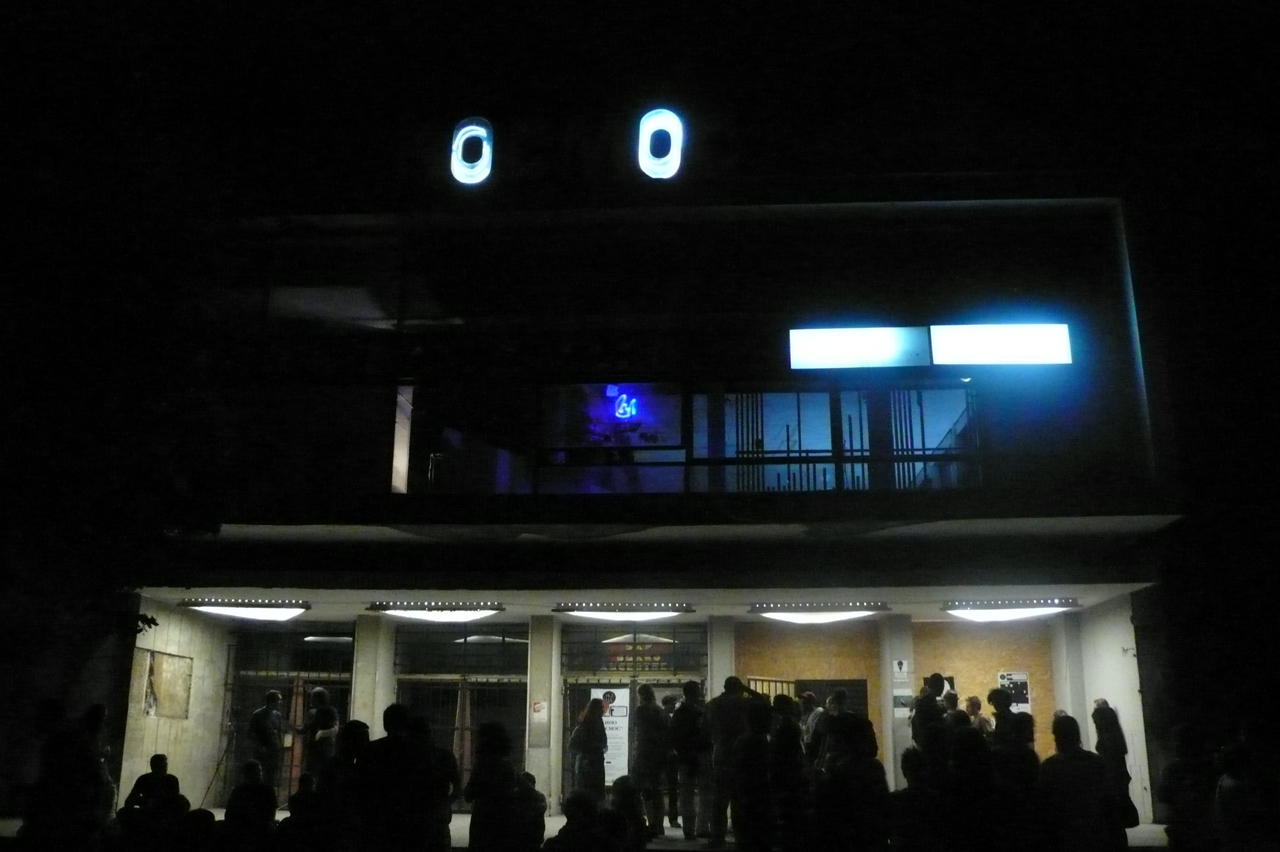 Rada Boukova
Beam throwing, 2014
switching on two neon letters O on the roof of the cinema Kosmos
Rada Boukova
Beam throwing, 2014
switching on two neon letters O on the roof of the cinema Kosmos
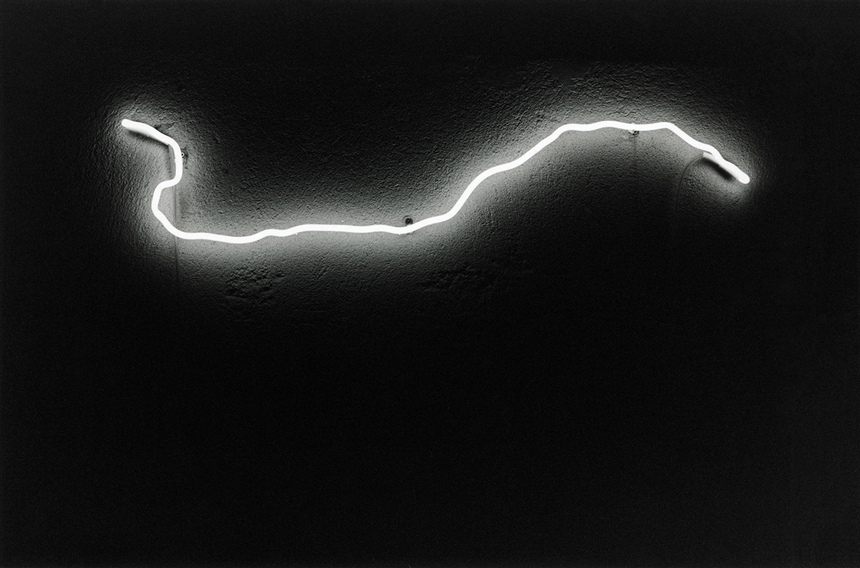 Pravdoliub Ivanov
Border by Memory, 2006
object, neon
Pravdoliub Ivanov
Border by Memory, 2006
object, neon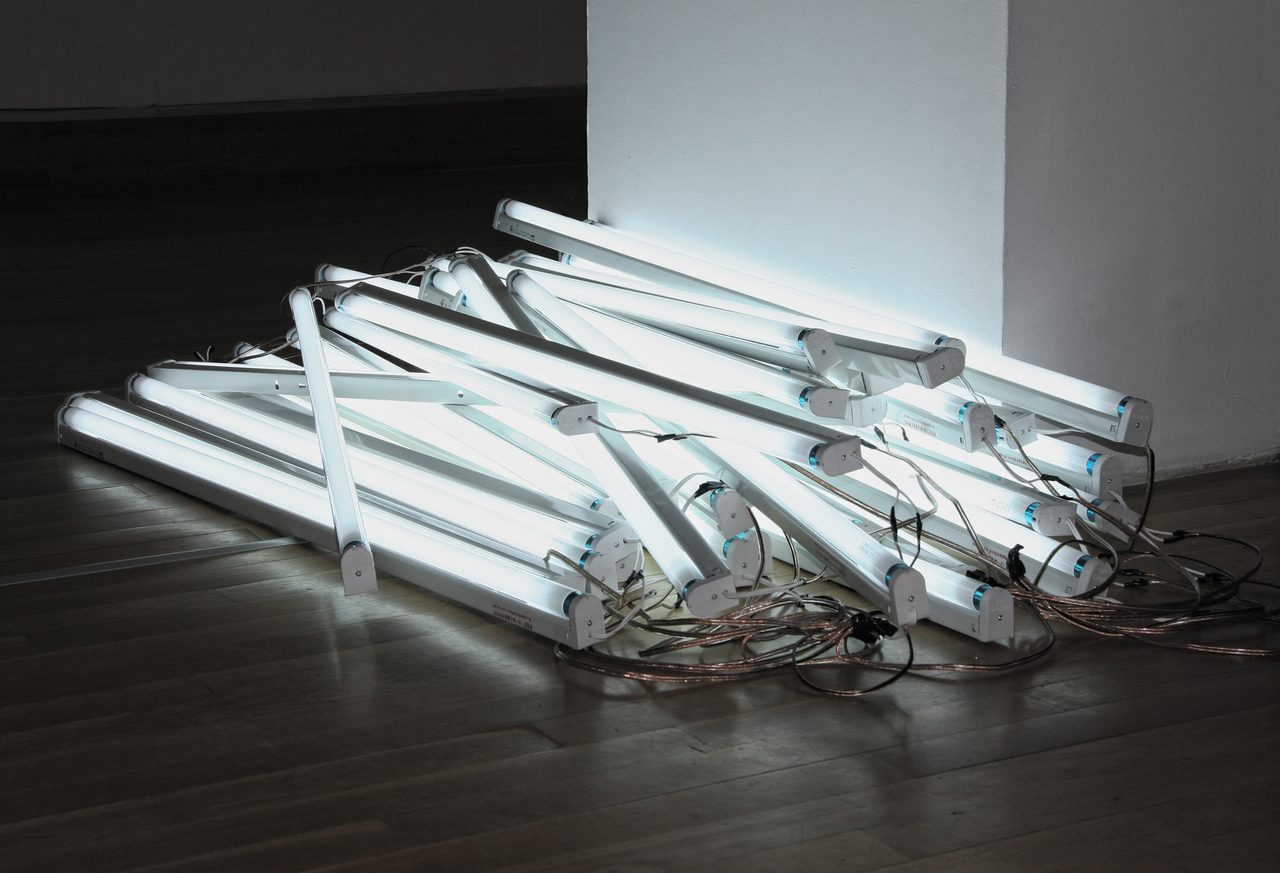 Pravdoliub Ivanov
Don't Give Up, 2006-2020
Luminescent tubes, cables
Pravdoliub Ivanov
Don't Give Up, 2006-2020
Luminescent tubes, cables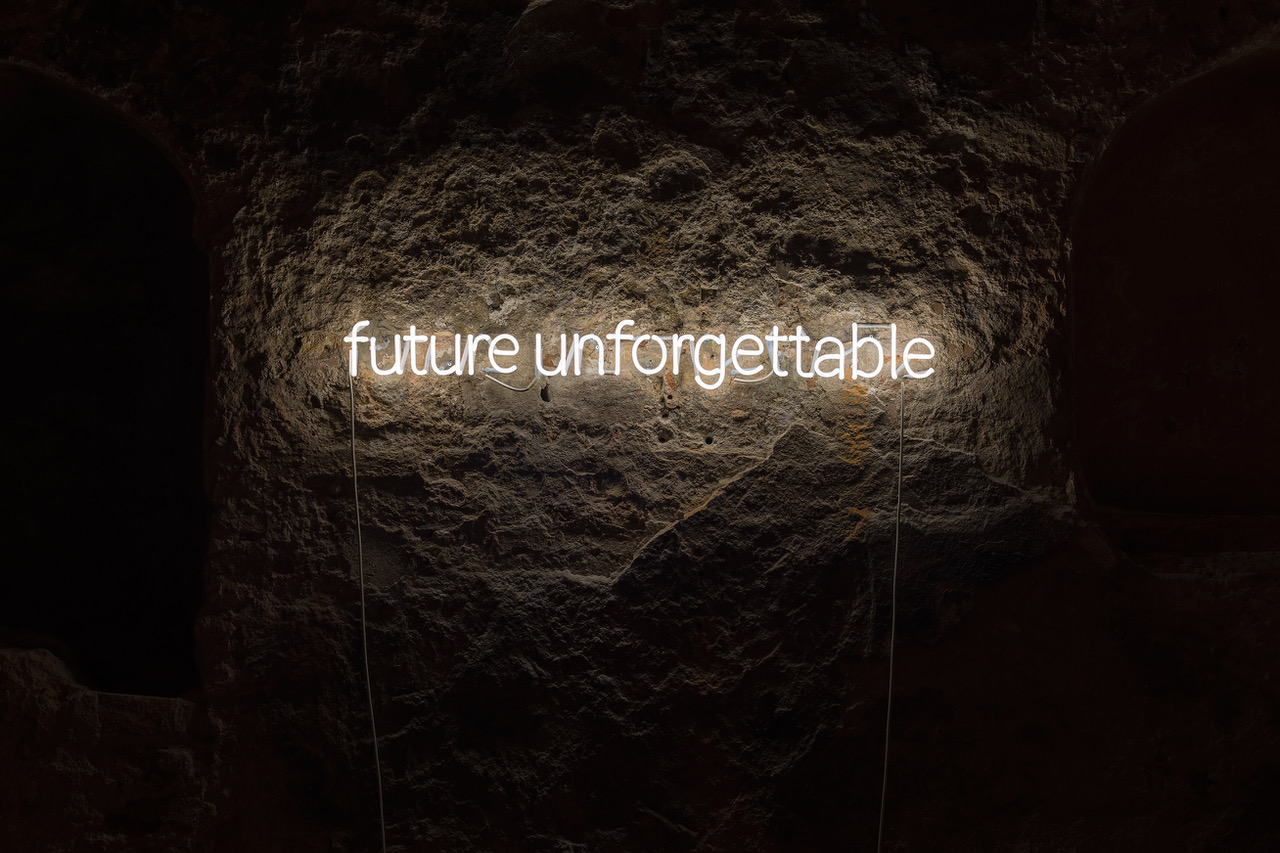 Krassimir Terziev
Future Unforgettable, 2019
white neon
Krassimir Terziev
Future Unforgettable, 2019
white neon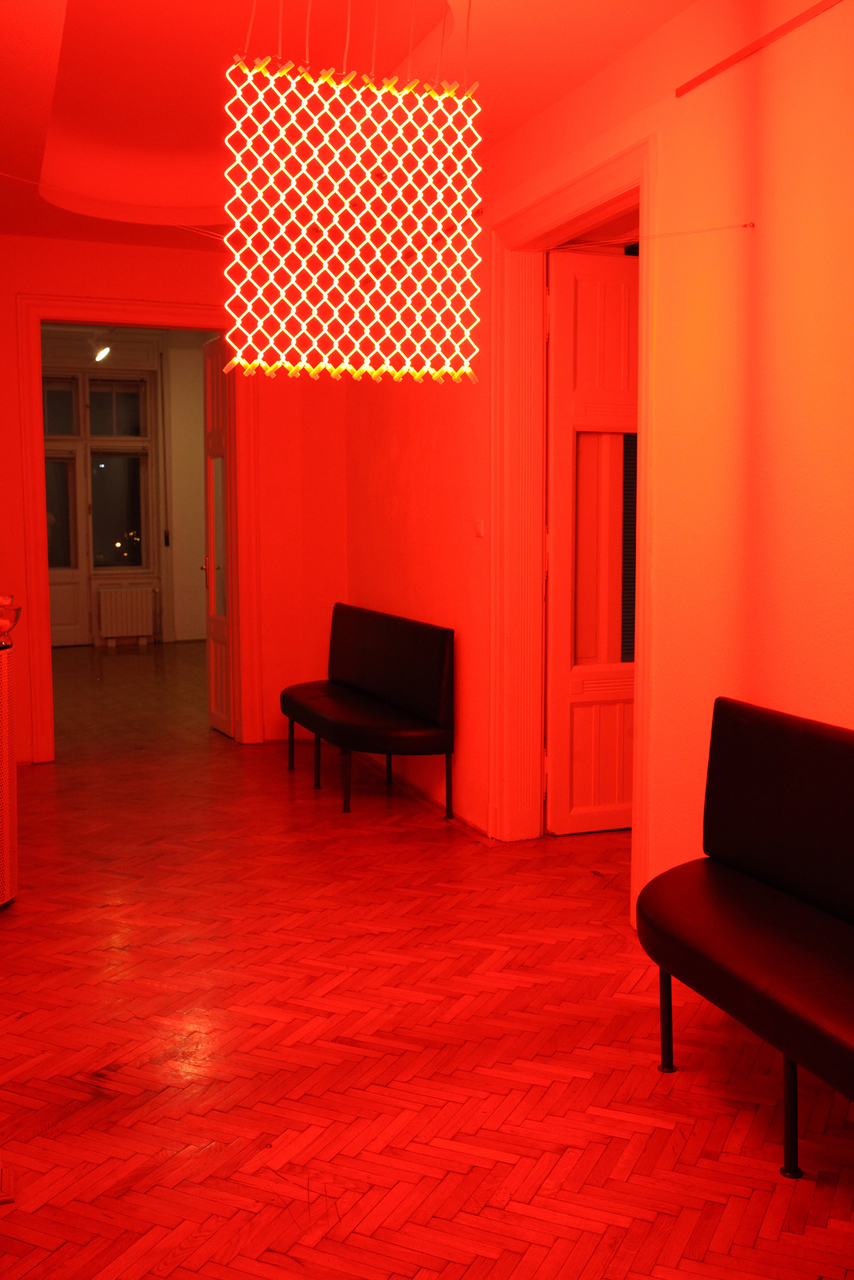 Kamen Stoyanov
High Voltage Fence, 2015
Neon
Kamen Stoyanov
High Voltage Fence, 2015
Neon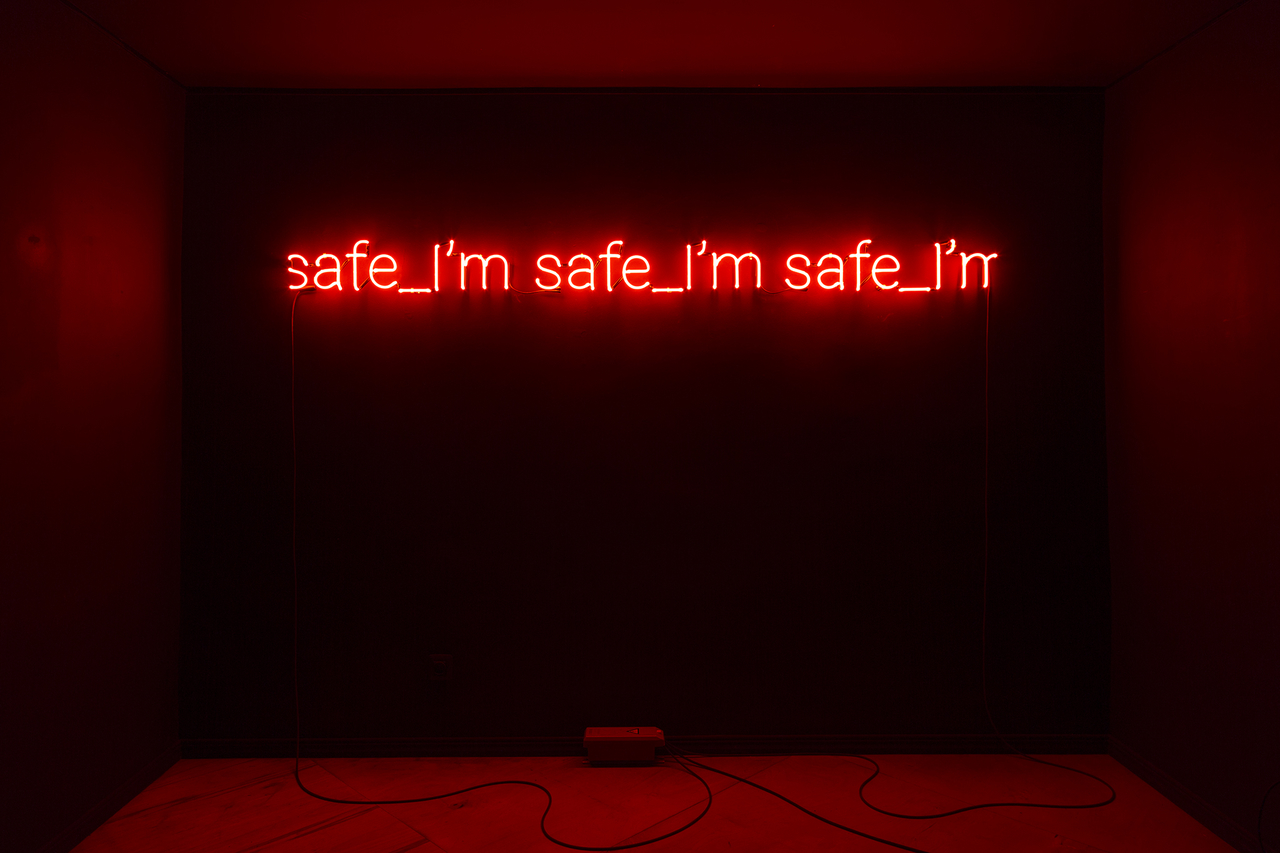 Kalin Serapionov
I'm Safe, 2016
Neon, cabels, transformer
Kalin Serapionov
I'm Safe, 2016
Neon, cabels, transformer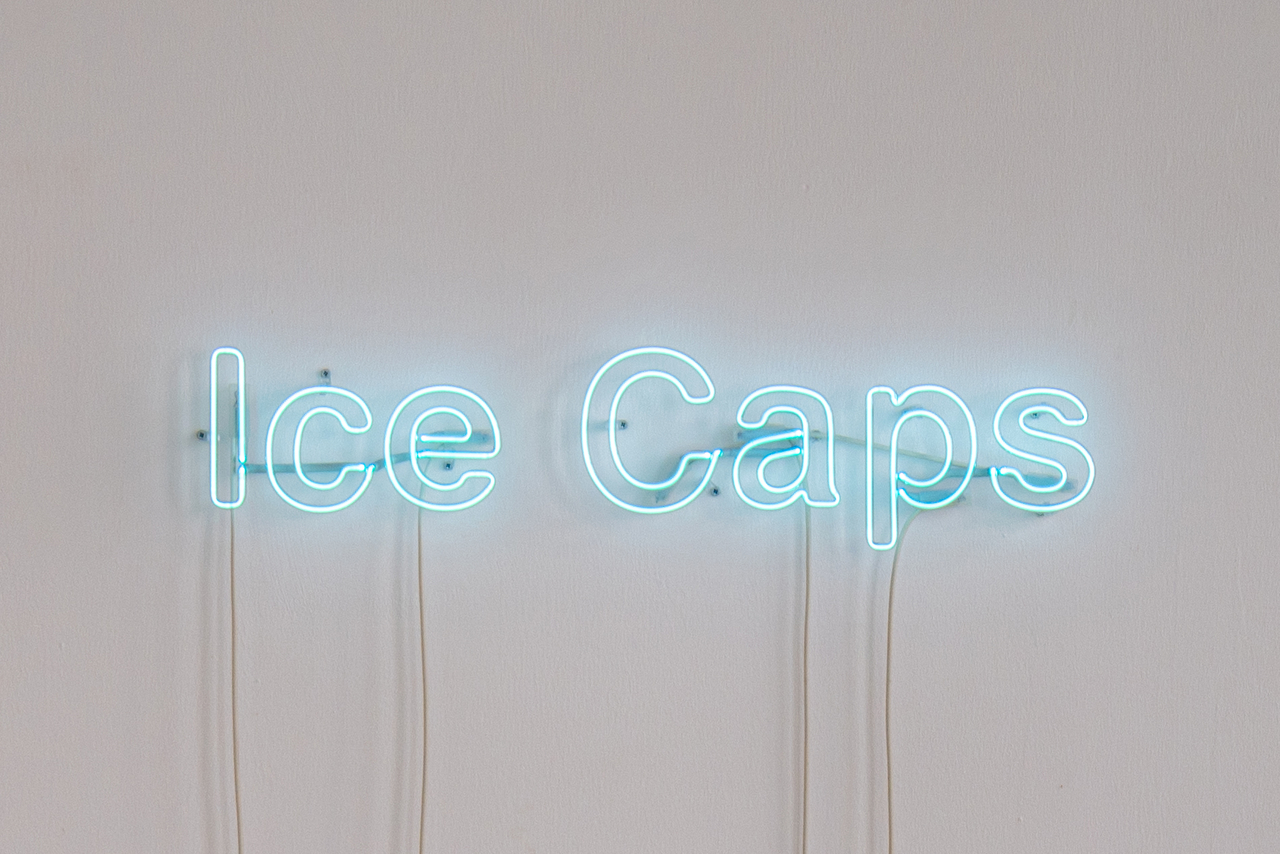 Dimitar Solakov
Ice Caps, 2019
neon sign
Dimitar Solakov
Ice Caps, 2019
neon sign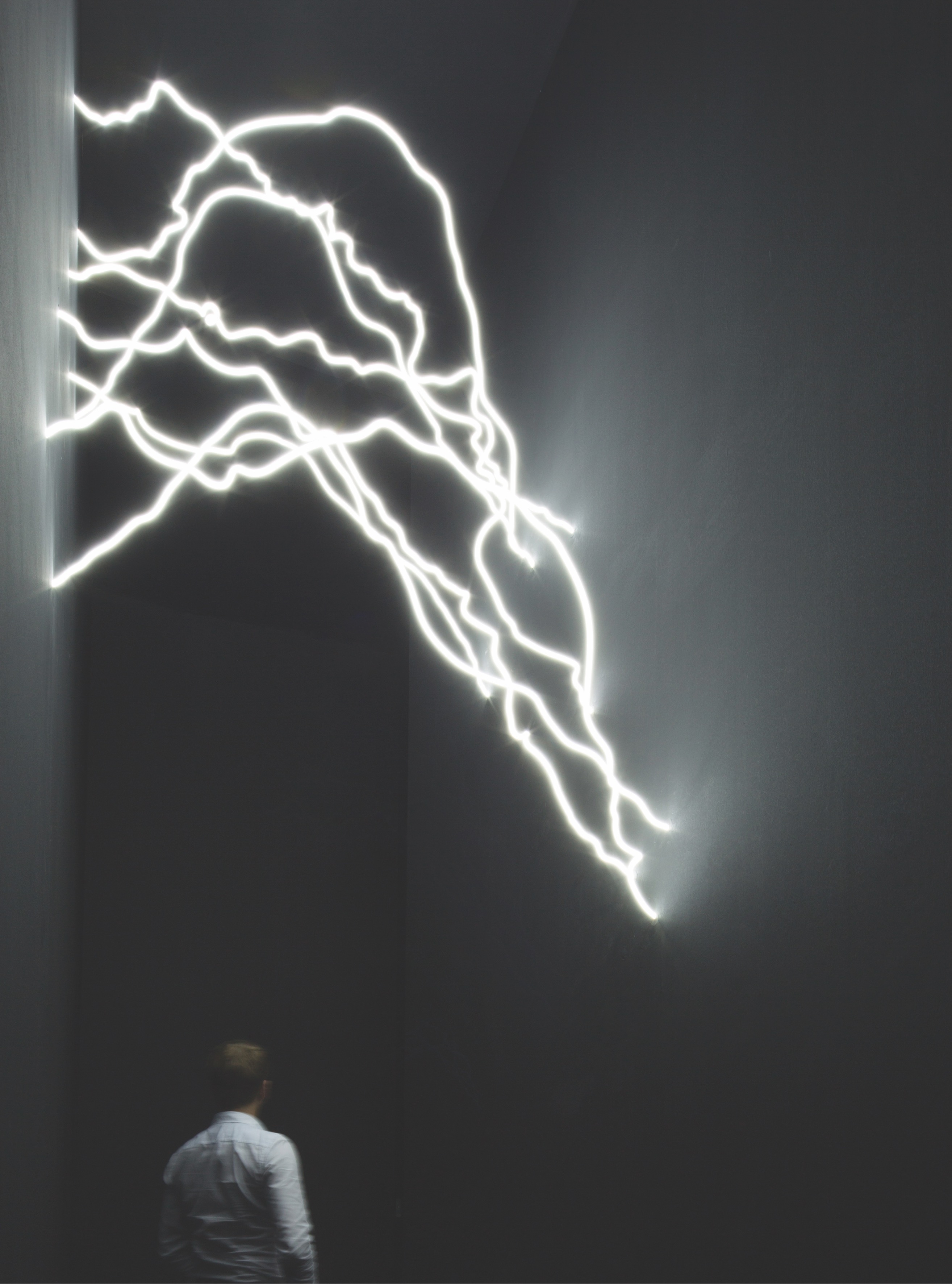 Mariana Vassileva
INBETWEEN, 2015
neon lights
Mariana Vassileva
INBETWEEN, 2015
neon lights Pravdoliub Ivanov
Little (Much Too Little /A Little Too Much), 2009
installation
Pravdoliub Ivanov
Little (Much Too Little /A Little Too Much), 2009
installation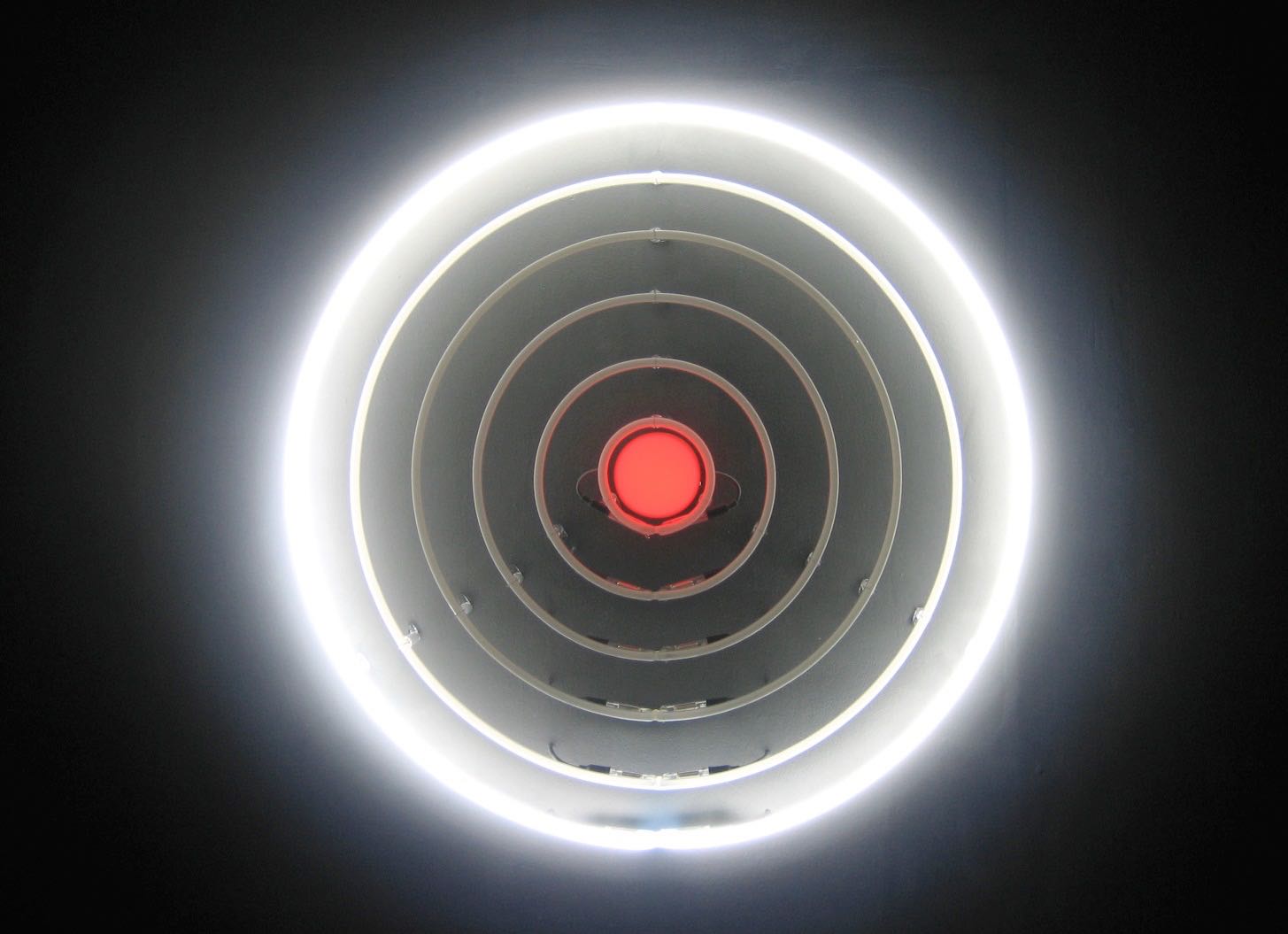 Stefan Nikolaev
Lucky you, 2005
Neon, aluminum box, electrical material, diam. 100 cm, dimmer
Stefan Nikolaev
Lucky you, 2005
Neon, aluminum box, electrical material, diam. 100 cm, dimmer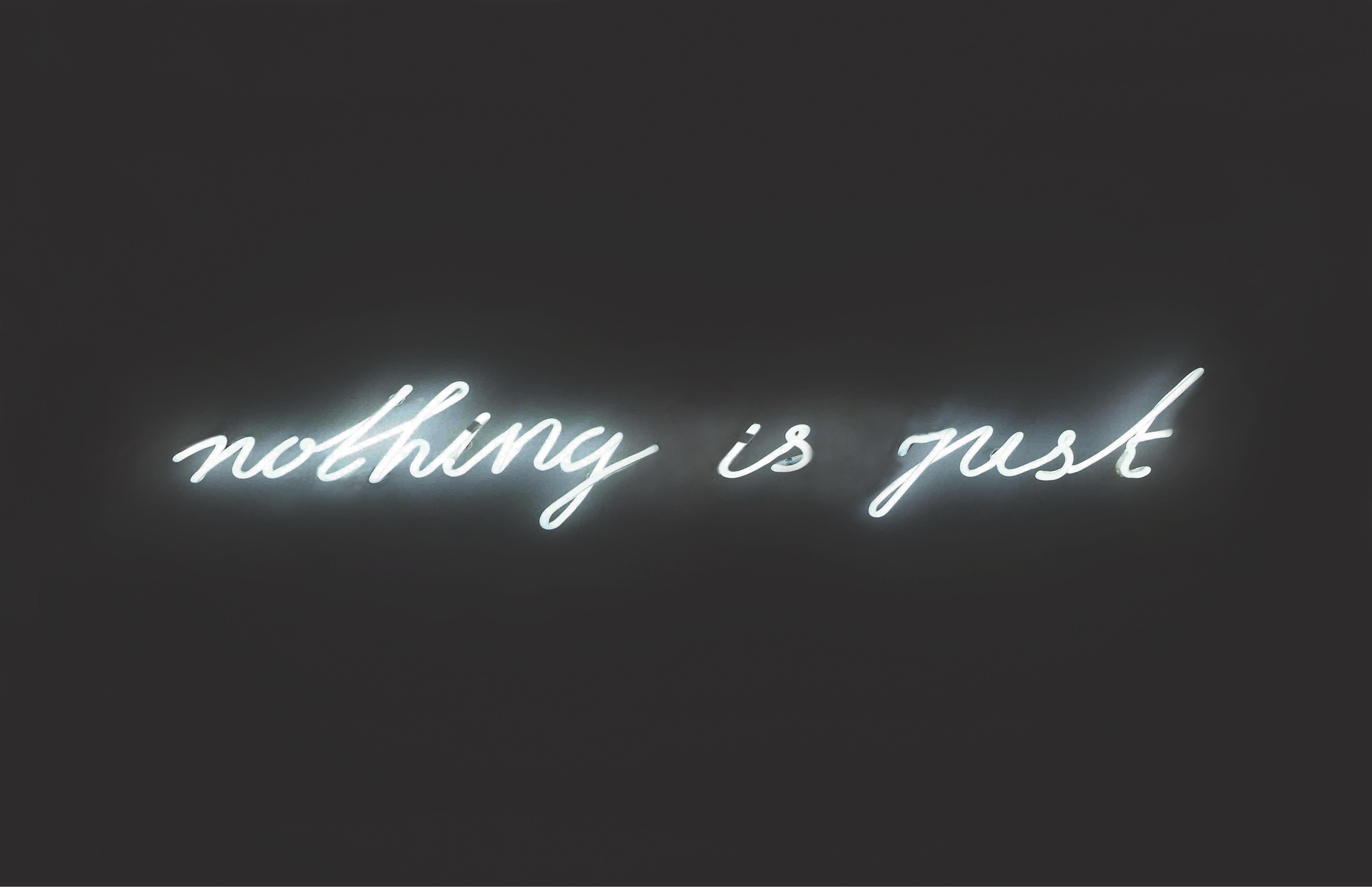 Mariana Vassileva
Nothing is Just, 2006
neon lights
Mariana Vassileva
Nothing is Just, 2006
neon lights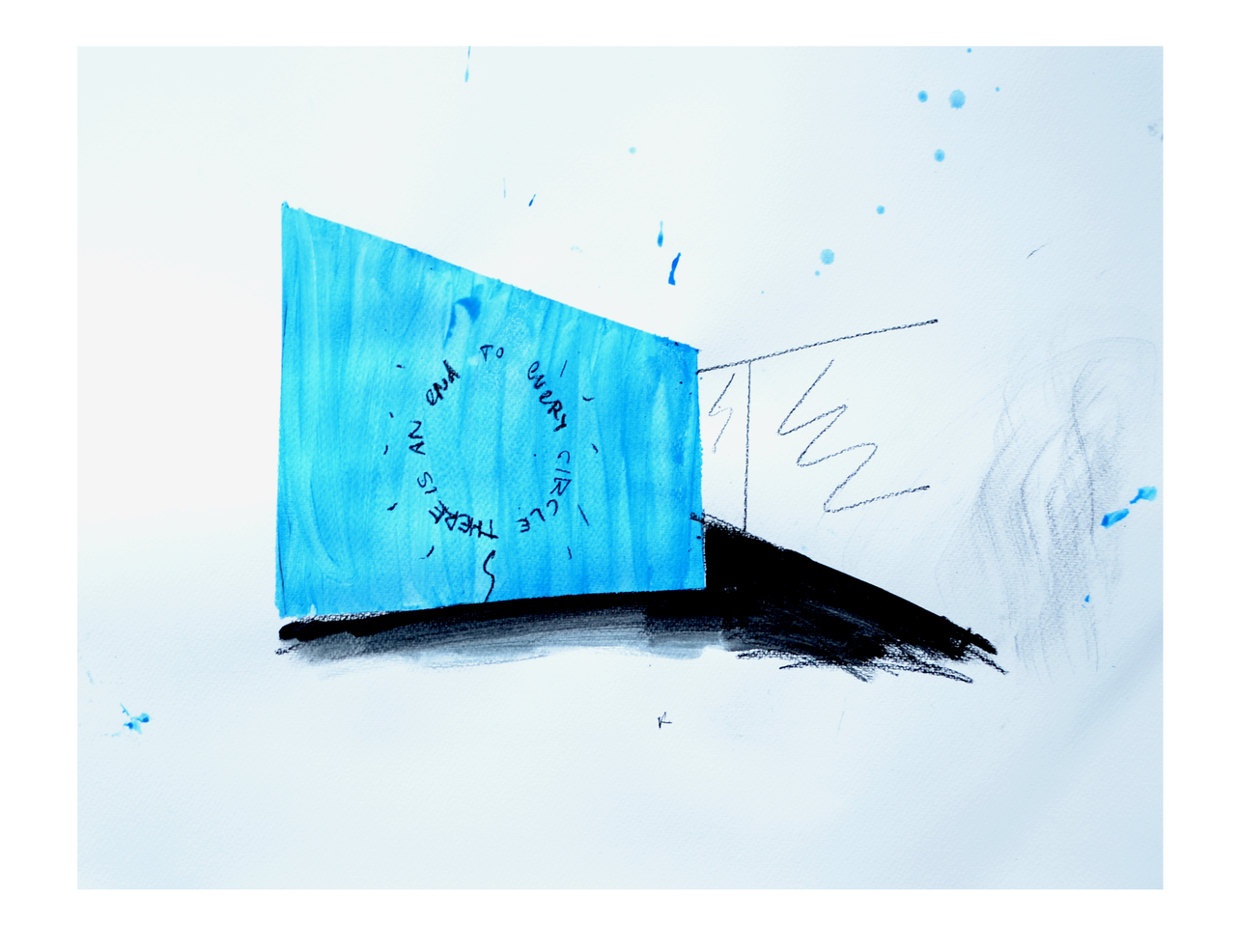 Vikenti Komitski
Studies for To Every Circe There Is An End, 2020
charcoal and gouache on 250g paper
Vikenti Komitski
Studies for To Every Circe There Is An End, 2020
charcoal and gouache on 250g paper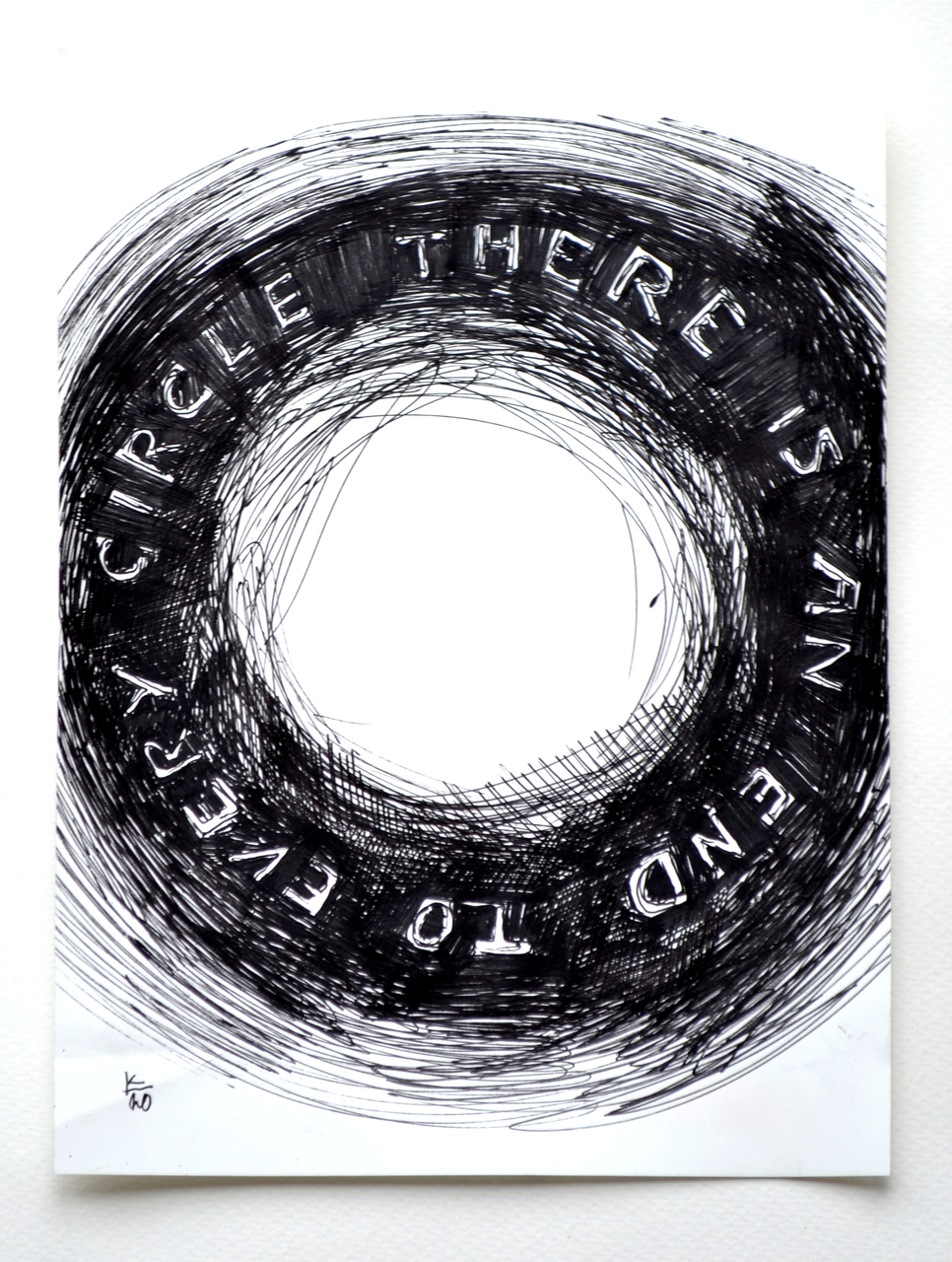 Vikenti Komitski
Studies for To Every Circe There Is An End, 2020
ball pen on 100g perigraphica paper
Vikenti Komitski
Studies for To Every Circe There Is An End, 2020
ball pen on 100g perigraphica paper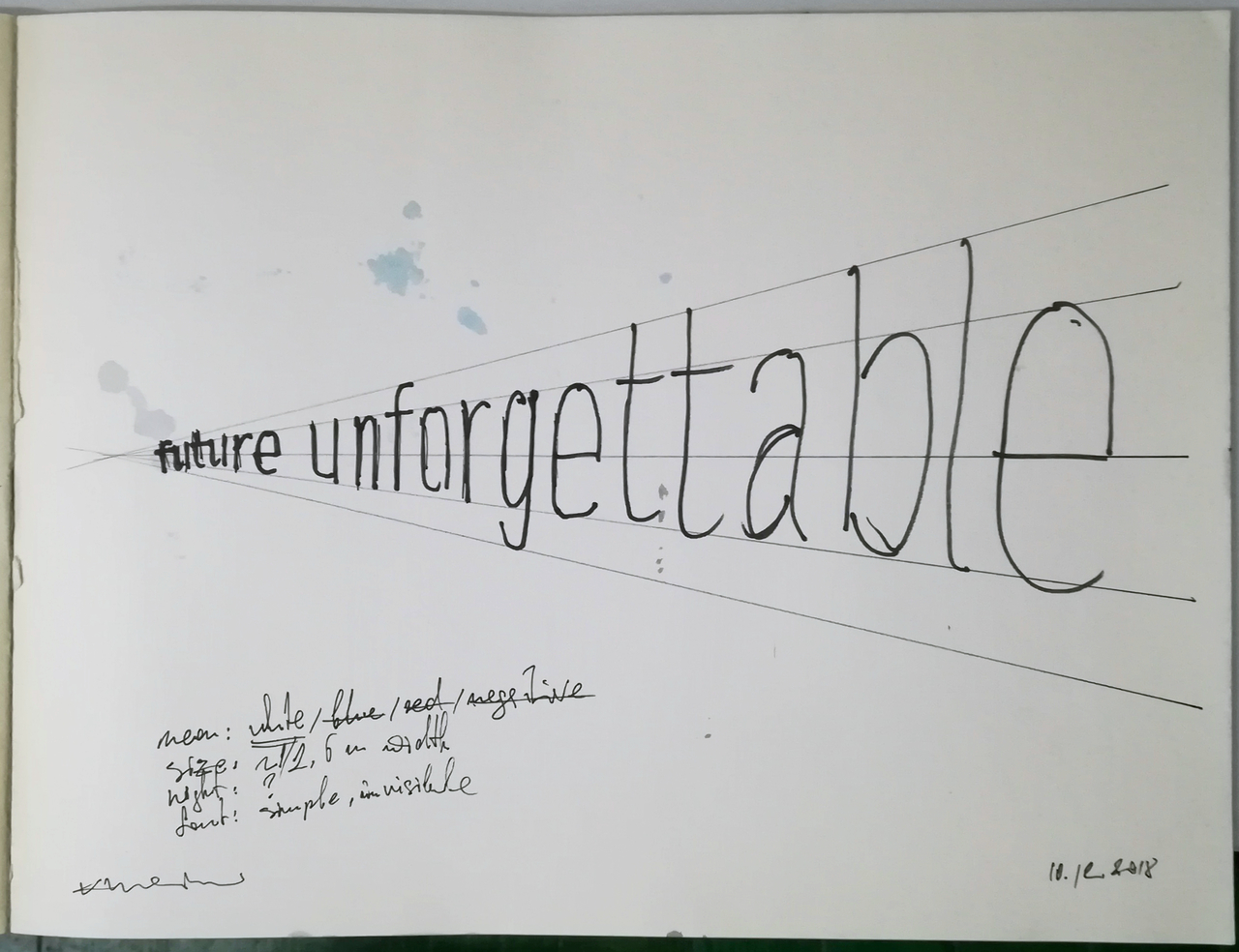 Study for 'Future Unforgettable', 2018
marker on paper
Study for 'Future Unforgettable', 2018
marker on paper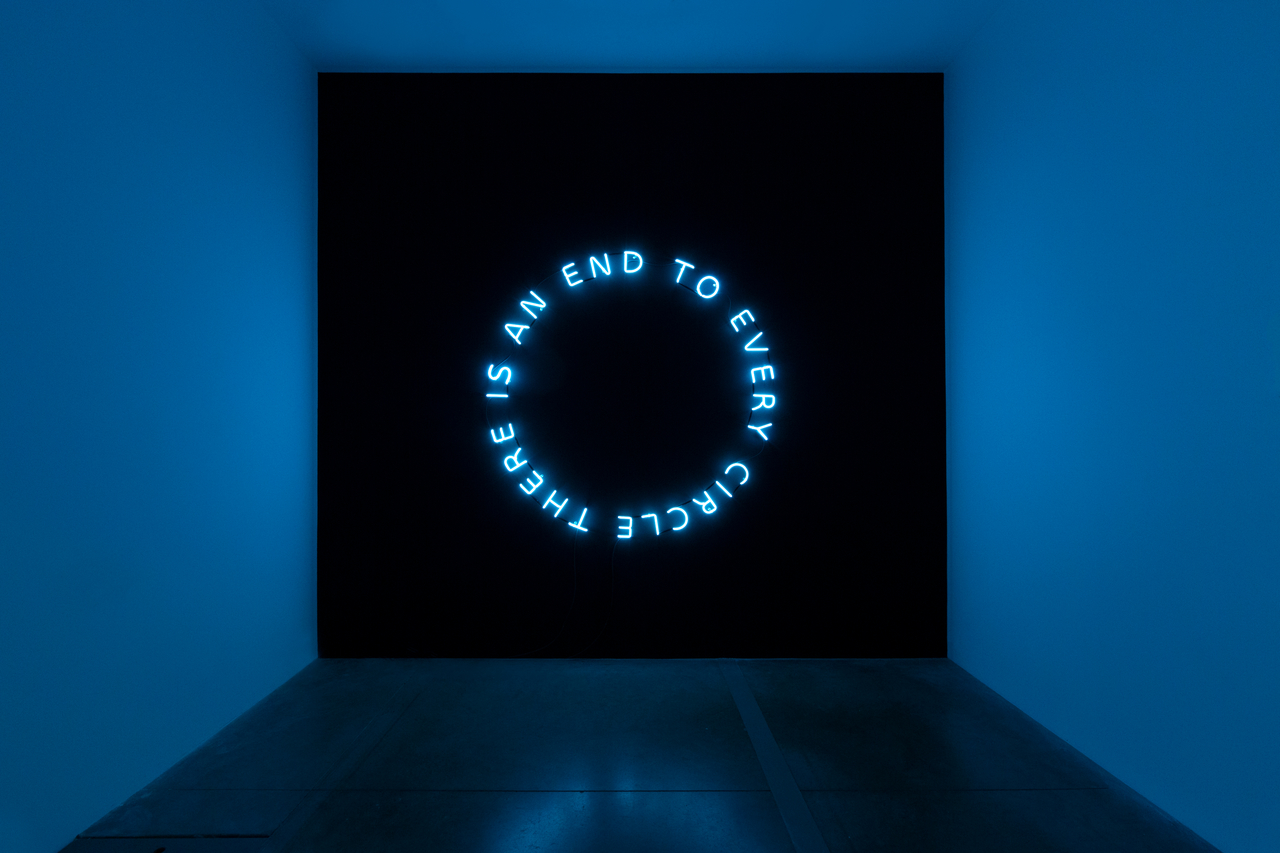 Vikenti Komitski
The End of The Circle, 2019
neon sign
Vikenti Komitski
The End of The Circle, 2019
neon sign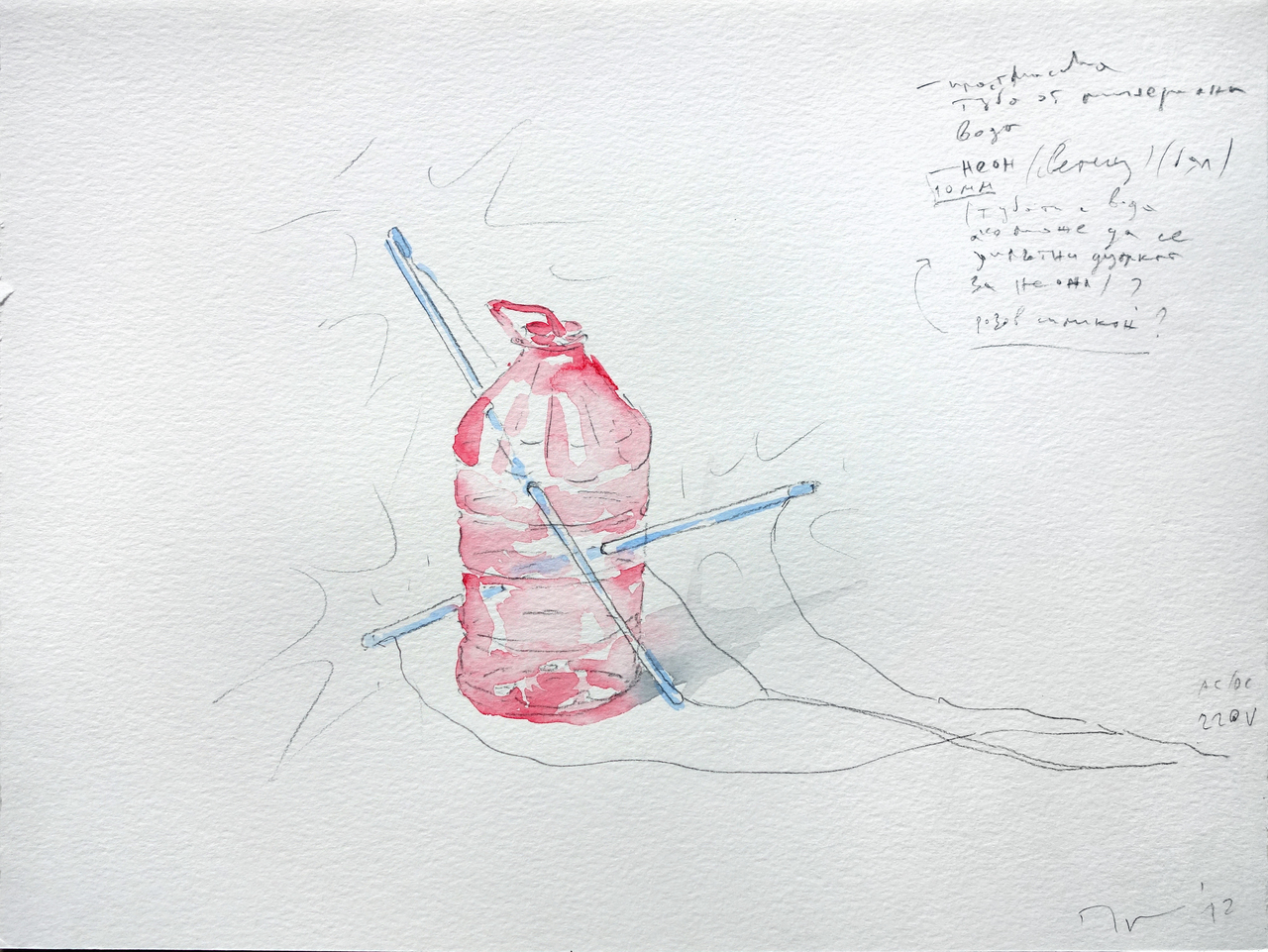 Pravdoliub Ivanov
Untitled, 2012
Draft project,
Pravdoliub Ivanov
Untitled, 2012
Draft project,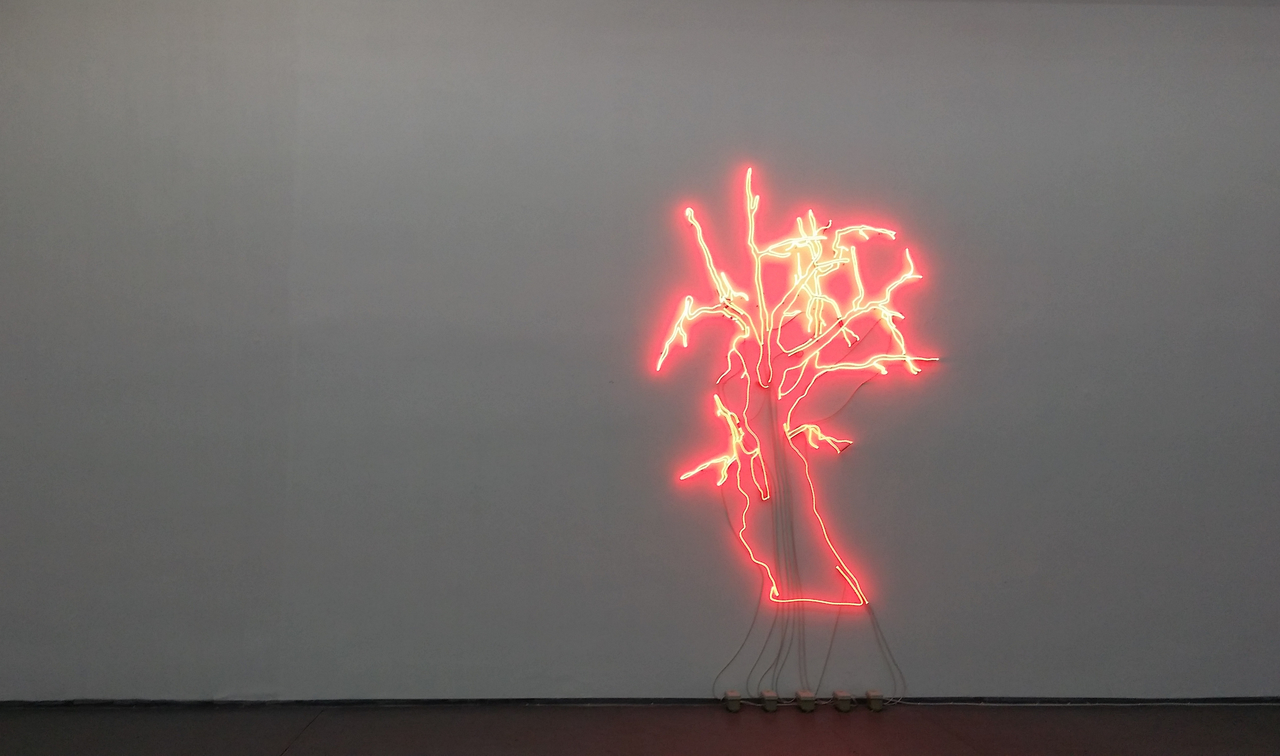 Ventsislav Zankov
Untitled, 2020
neon
Ventsislav Zankov
Untitled, 2020
neon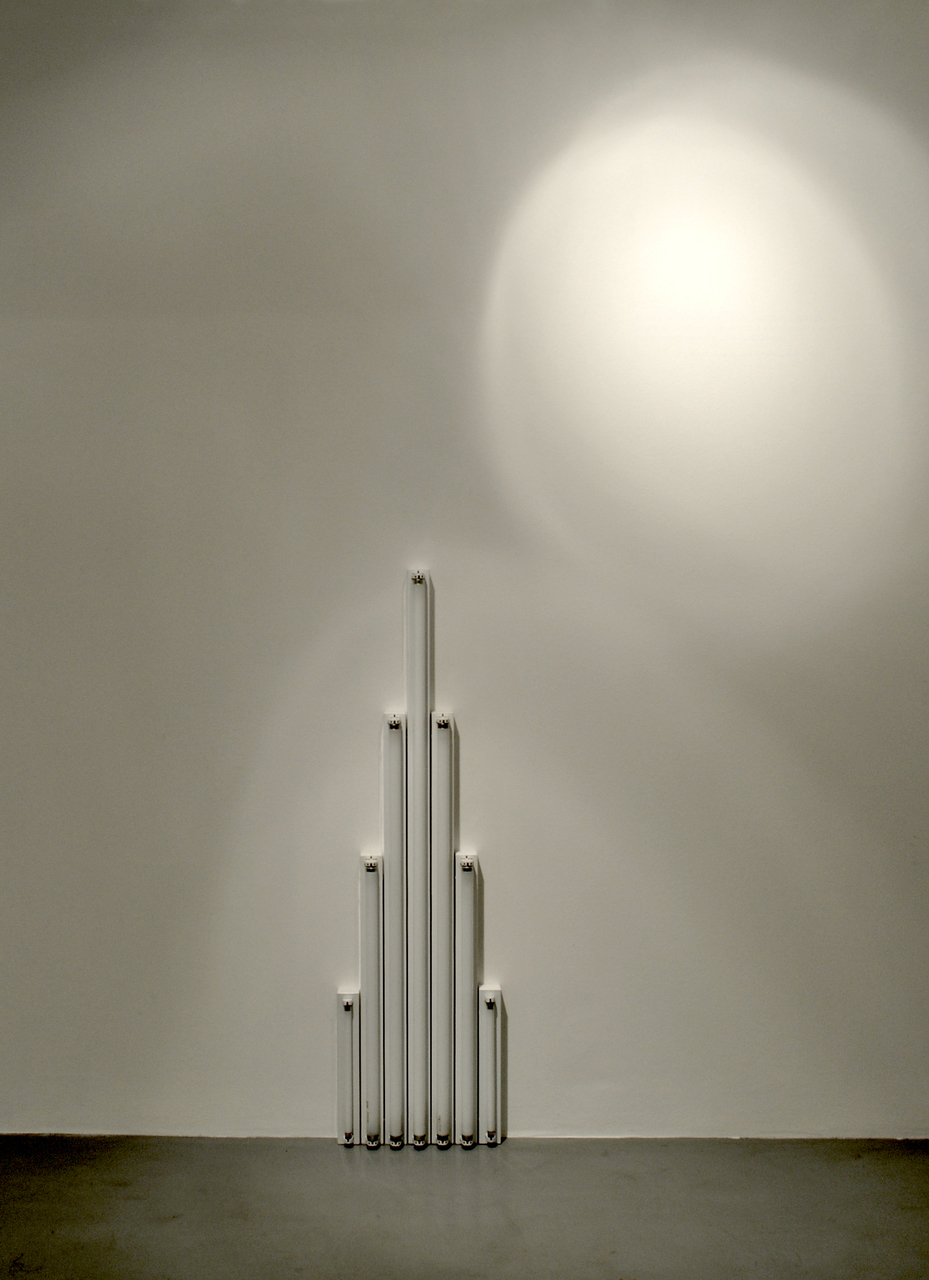 Samuil Stoyanov
Utopia 2, 2010
switched off neon lamps, white PVC foil
Samuil Stoyanov
Utopia 2, 2010
switched off neon lamps, white PVC foil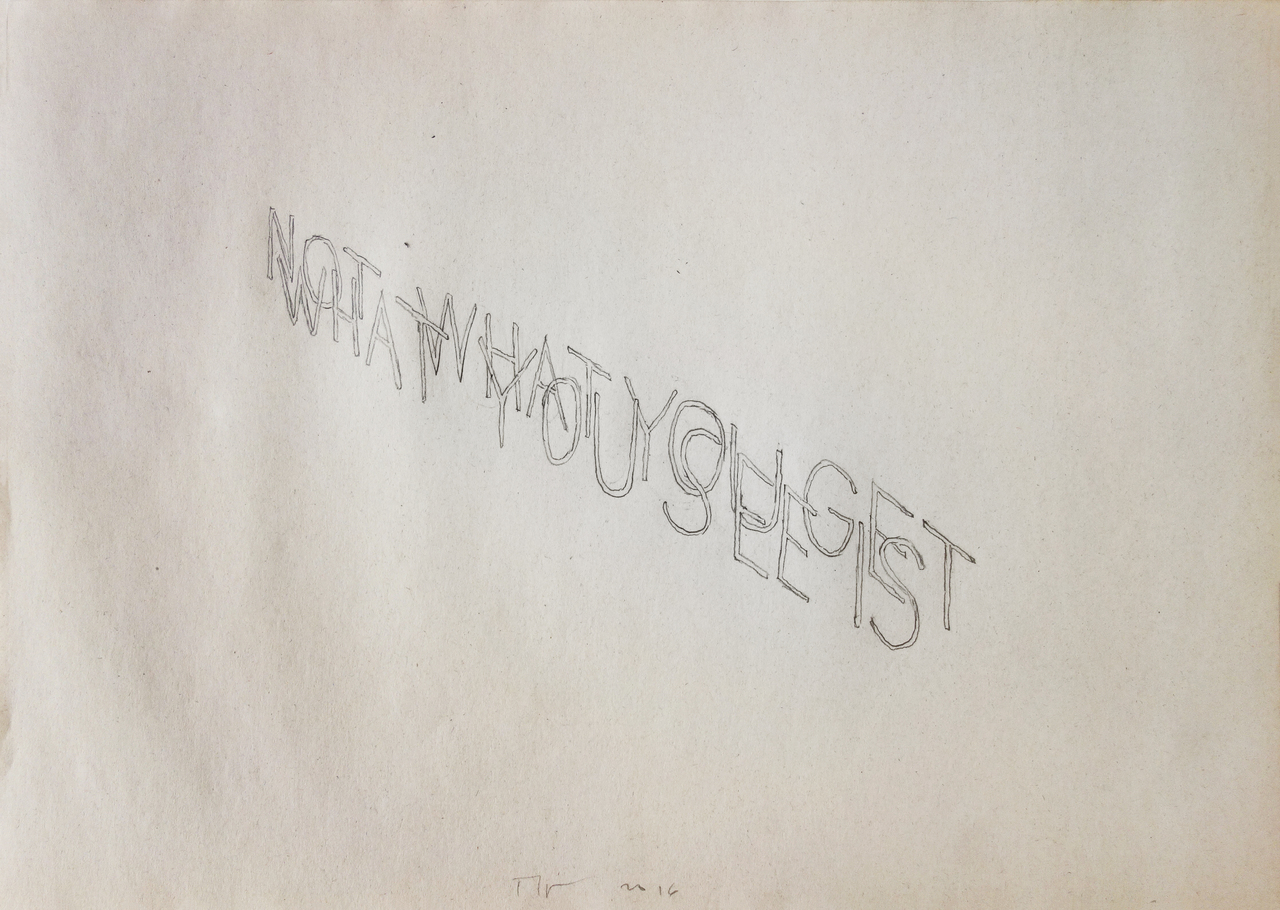 Pravdoliub Ivanov
What You See, 2016
Draft project,
Pravdoliub Ivanov
What You See, 2016
Draft project,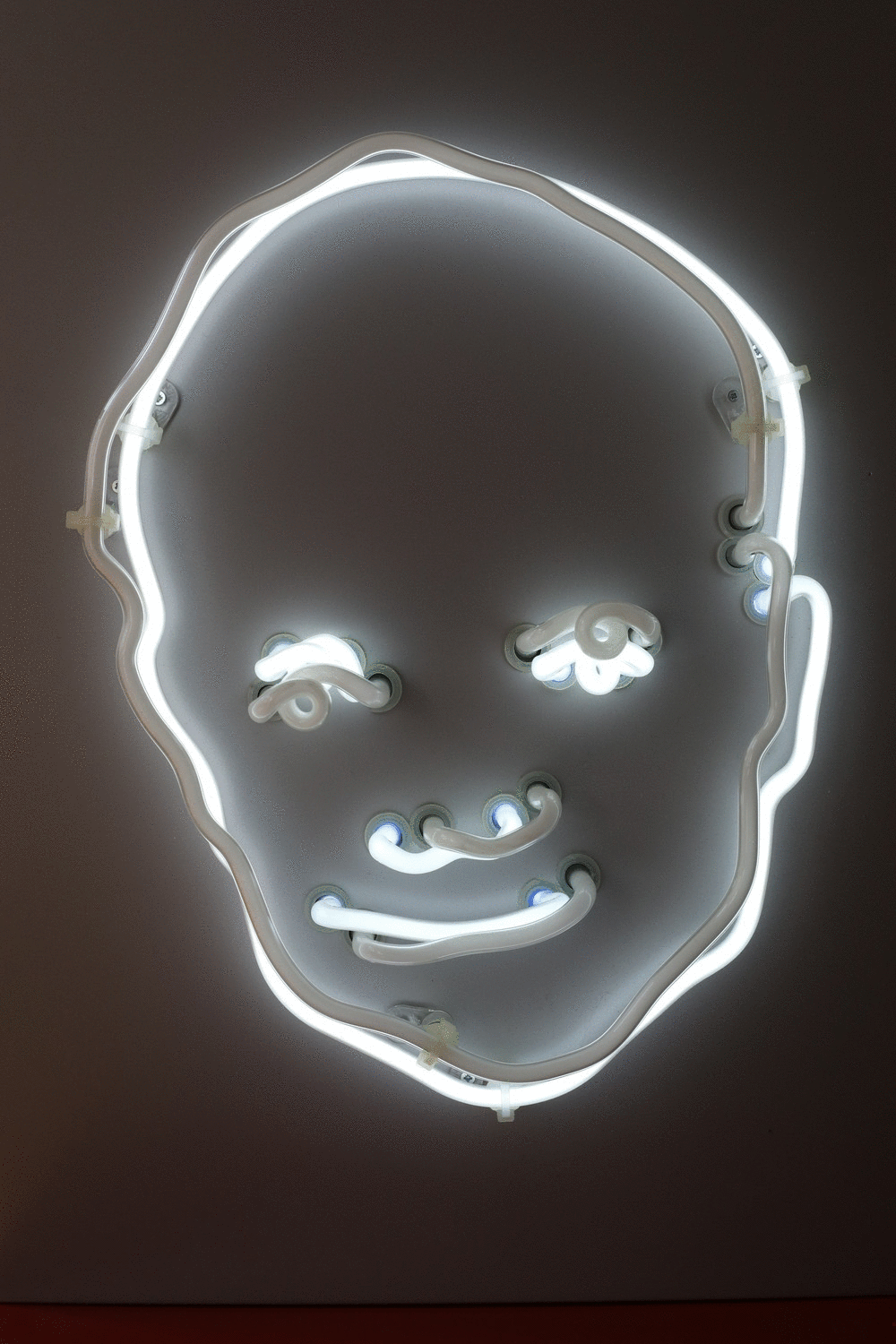 Kamen Stoyanov
Yes, 2012
neon
Kamen Stoyanov
Yes, 2012
neon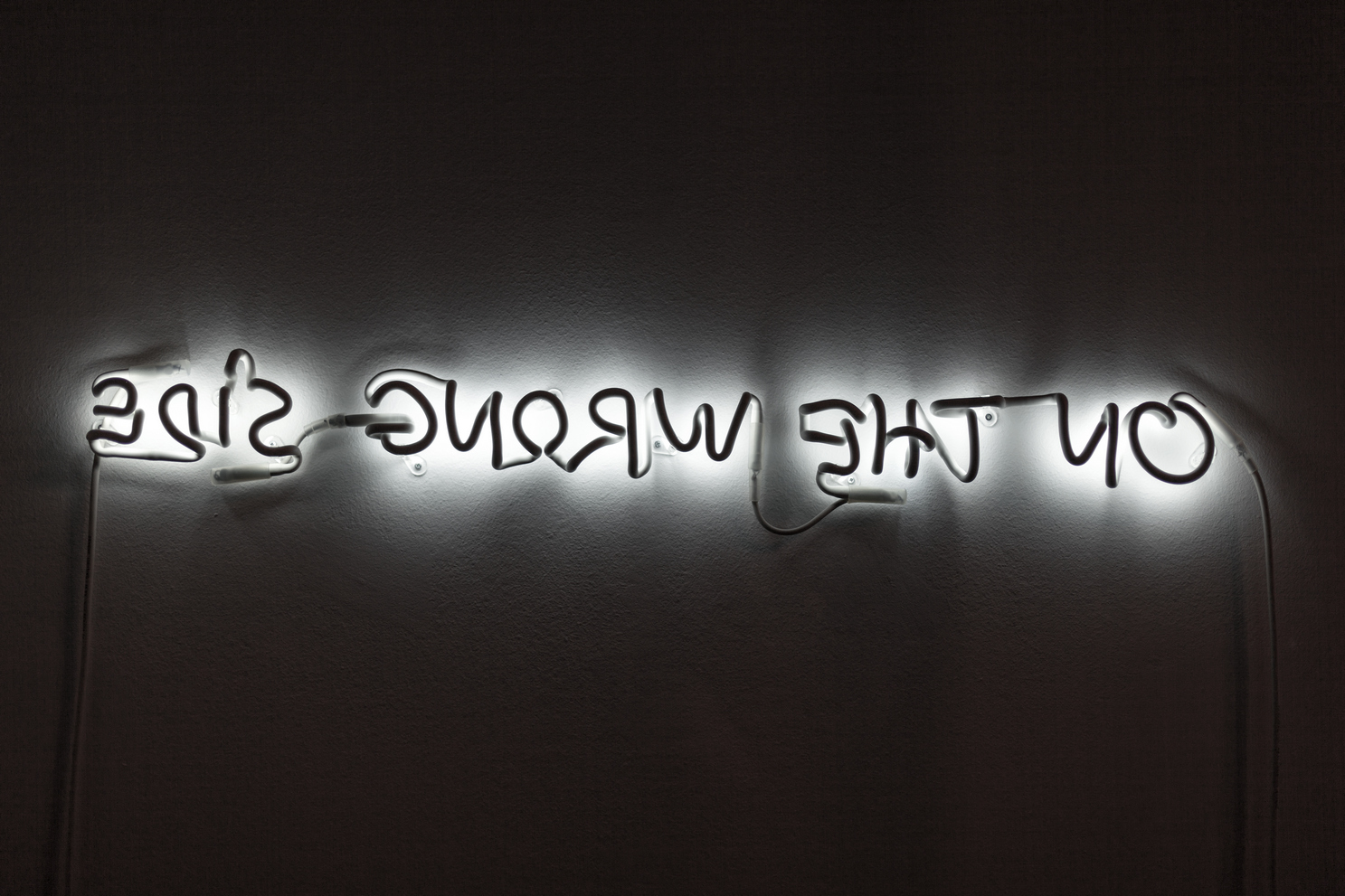 Pravdoliub Ivanov
You are..., 2016
neon
Pravdoliub Ivanov
You are..., 2016
neon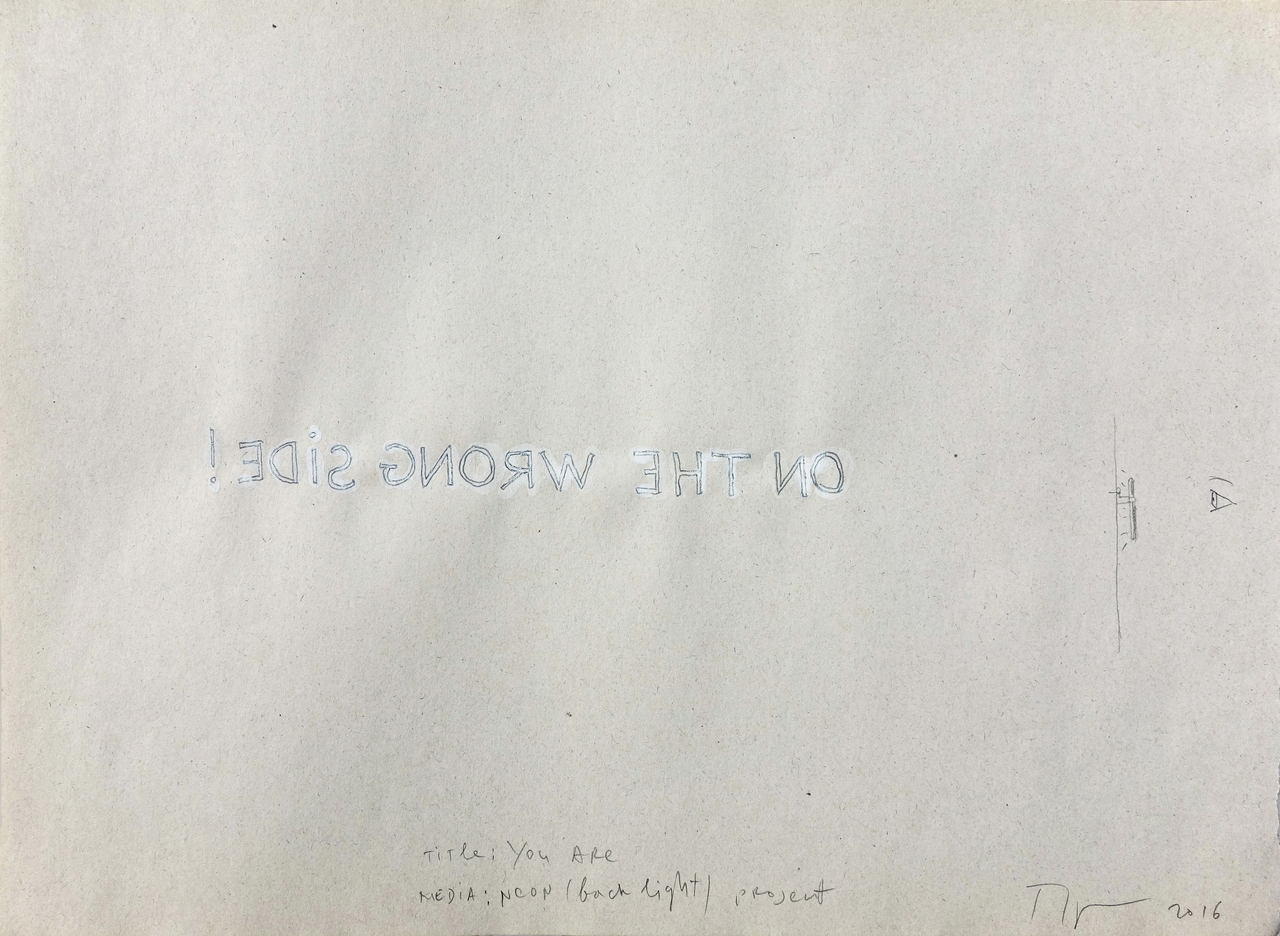 Pravdoliub Ivanov
You Are…, 2016
Draft project
Pravdoliub Ivanov
You Are…, 2016
Draft project